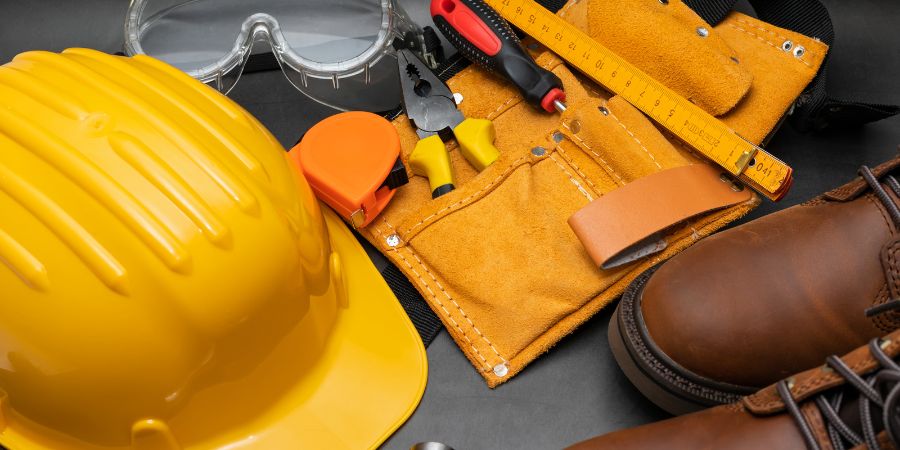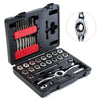
Must-Have Protective Gear for Your DIY Workshop
A well-equipped DIY workshop is the dream of every DIY enthusiast, handyman, and hobbyist. However, safety should be the number one priority when working in such an environment. Having the right protective gear not only ensures your safety but also allows you to work more efficiently and comfortably.
In this in-depth guide, we will discuss the must-have protective gear for your DIY workshop. We will cover various types of safety equipment, their functions, and why they are essential for your workshop. So, whether you are a DIY professional, homeowner, or just someone who enjoys tinkering around, this guide is for you.
Table of Contents
- Eye Protection
- Hearing Protection
- Respiratory Protection
- Hand Protection
- Foot Protection
- Head Protection
- Body Protection
- Fire Safety Equipment
- First Aid Kit
- Safety Signage
- Conclusion
Eye Protection
Safety Glasses

One of the most crucial pieces of protective gear for your DIY workshop is eye protection. When working with power tools, chemicals, or any other materials that can cause eye injuries, it's vital to wear safety glasses. These glasses should have impact-resistant lenses and side shields to protect your eyes from flying debris and particles.
Examples of tasks requiring safety glasses:
- Cutting wood or metal
- Drilling holes
- Sanding surfaces
- Mixing chemicals
Goggles

For situations where more comprehensive eye protection is needed, goggles are the ideal choice. Goggles provide a seal around the eyes, preventing small particles and liquid splashes from entering. They are perfect for tasks involving chemicals, grinding, or other activities that produce a significant amount of dust.
Examples of tasks requiring goggles:
- Grinding metal
- Working with chemicals (painting, staining, etc.)
- Chiseling or carving wood
Face Shields

Face shields offer full-face protection, which is crucial when working with larger power tools or performing tasks that generate high-speed flying debris. They should be used in conjunction with safety glasses or goggles for maximum protection.
Examples of tasks requiring face shields:
- Using a chainsaw
- Operating a table saw or circular saw
- Welding or cutting metal
Hearing Protection
Earplugs

Prolonged exposure to loud noises can result in permanent hearing damage, making hearing protection essential in a DIY workshop. Earplugs are a simple and cost-effective way to protect your ears from excessive noise. They are available in disposable foam or reusable silicone options and can be easily stored in your toolbox.
Examples of tasks requiring earplugs:
- Operating loud power tools (e.g., saws, drills)
- Hammering nails
- Sandblasting
Earmuffs

Earmuffs provide a higher level of hearing protection compared to earplugs. They fit over the ears and create a seal to block out noise effectively. Earmuffs are ideal for situations where you need to protect your hearing for extended periods or when working with extremely loud equipment.
Examples of tasks requiring earmuffs:
- Using a pneumatic nail gun
- Operating heavy machinery
- Working in a noisy environment for extended periods
Respiratory Protection
Dust Masks

Dust masks are essential for protecting your respiratory system from dust, dirt, and other airborne particles generated during various DIY tasks. They are available in disposable or reusable options and should be worn when working with materials that produce fine dust.
Examples of tasks requiring dust masks:
- Sanding wood or drywall
- Cutting or grinding materials (wood, metal, concrete)
- Sweeping the workshop floor
Respirators

For tasks that involve exposure to harmful chemicals, fumes, or vapors, a respirator is necessary. Respirators are available in half-face and full-face options, with replaceable filters designed to protect against specific hazards. It's crucial to choose the right type of filter for the task at hand.
Examples of tasks requiring respirators:
- Spray painting or applying solvents
- Welding or cutting metal
- Working with chemicals (e.g., epoxy, adhesives)
Hand Protection
Work Gloves

Your hands are one of your most valuable tools, so it's essential to protect them from injuries. Work gloves should be chosen based on the specific task you are performing. There are various types of gloves available, including leather, nitrile, cut-resistant, and heat-resistant options.
Examples of tasks requiring work gloves:
- Handling rough or sharp materials
- Working with chemicals
- Using hand tools (e.g., hammers, pliers)
Anti-Vibration Gloves

When working with power tools that generate significant vibrations, anti-vibration gloves can help prevent hand fatigue and long-term injuries such as carpal tunnel syndrome. These gloves are designed with padding or gel inserts to absorb vibrations and reduce strain on your hands.
Examples of tasks requiring anti-vibration gloves:
- Operating power tools (e.g., grinders, sanders, jackhammers)
- Hammer drilling into concrete
Related Article: Clamp and Vice Safety in DIY Projects
Foot Protection
Safety Shoes/Boots

Foot protection is crucial when working in a DIY workshop, as heavy objects can easily fall and cause severe injuries. Safety shoes or boots should have a reinforced toe cap (steel or composite) and slip-resistant soles. Some options also include puncture-resistant plates to protect against sharp objects on the floor.
Examples of tasks requiring safety shoes/boots:
- Lifting or moving heavy materials
- Operating heavy machinery
- Working with sharp objects (e.g., nails, screws)
Head Protection
Hard Hats

When working in an environment where there is a risk of falling objects or bumping your head, a hard hat is essential. They are designed to absorb impacts and protect your head from injuries.
Examples of tasks requiring hard hats:
- Working under scaffolding or ladders
- Renovation projects involving demolition
Body Protection
Protective Clothing

Depending on the task at hand, protective clothing may be necessary to shield your body from harm. This can include coveralls, aprons, or even flame-resistant clothing for tasks such as welding.
Examples of tasks requiring protective clothing:
- Painting or staining
- Welding or cutting metal
- Working with chemicals
Fire Safety Equipment

Every DIY workshop should have fire safety equipment in place, including a fire extinguisher, fire blanket, and smoke detectors. These items can help prevent small fires from becoming uncontrollable and ensure that you can react quickly in case of an emergency.
First Aid Kit

A well-stocked first aid kit is a must-have in any DIY workshop. Accidents can happen, and having the necessary supplies to treat minor injuries can make a significant difference. Your first aid kit should include items such as adhesive bandages, gauze, antiseptic wipes, and pain relievers.
Safety Signage

Conclusion
In conclusion, the importance of using protective gear in your DIY workshop cannot be overstated. Equipping yourself with the appropriate safety equipment is essential for preventing injuries and ensuring that you can work efficiently and comfortably on your projects. Furthermore, having the right protective gear demonstrates your commitment to safety, professionalism, and the well-being of everyone involved in your workshop activities.
As a responsible DIY enthusiast, handyman, or hobbyist, it is your duty to prioritize safety and lead by example. By adhering to the guidelines discussed in this article and investing in the must-have protective gear, you are actively contributing to a safer and more enjoyable working environment for yourself and others.



